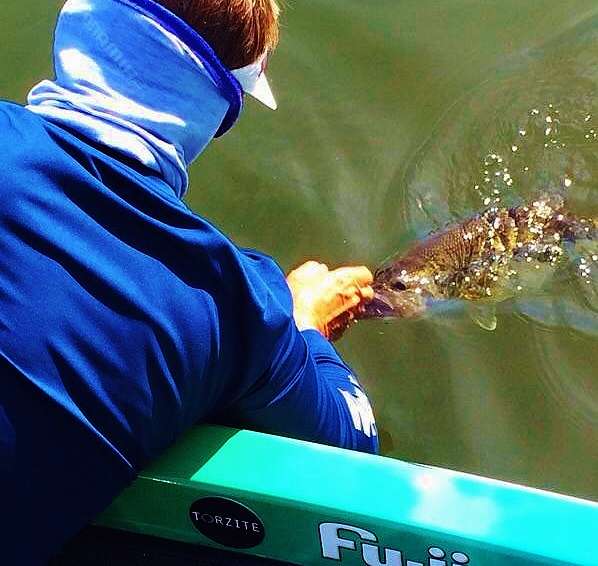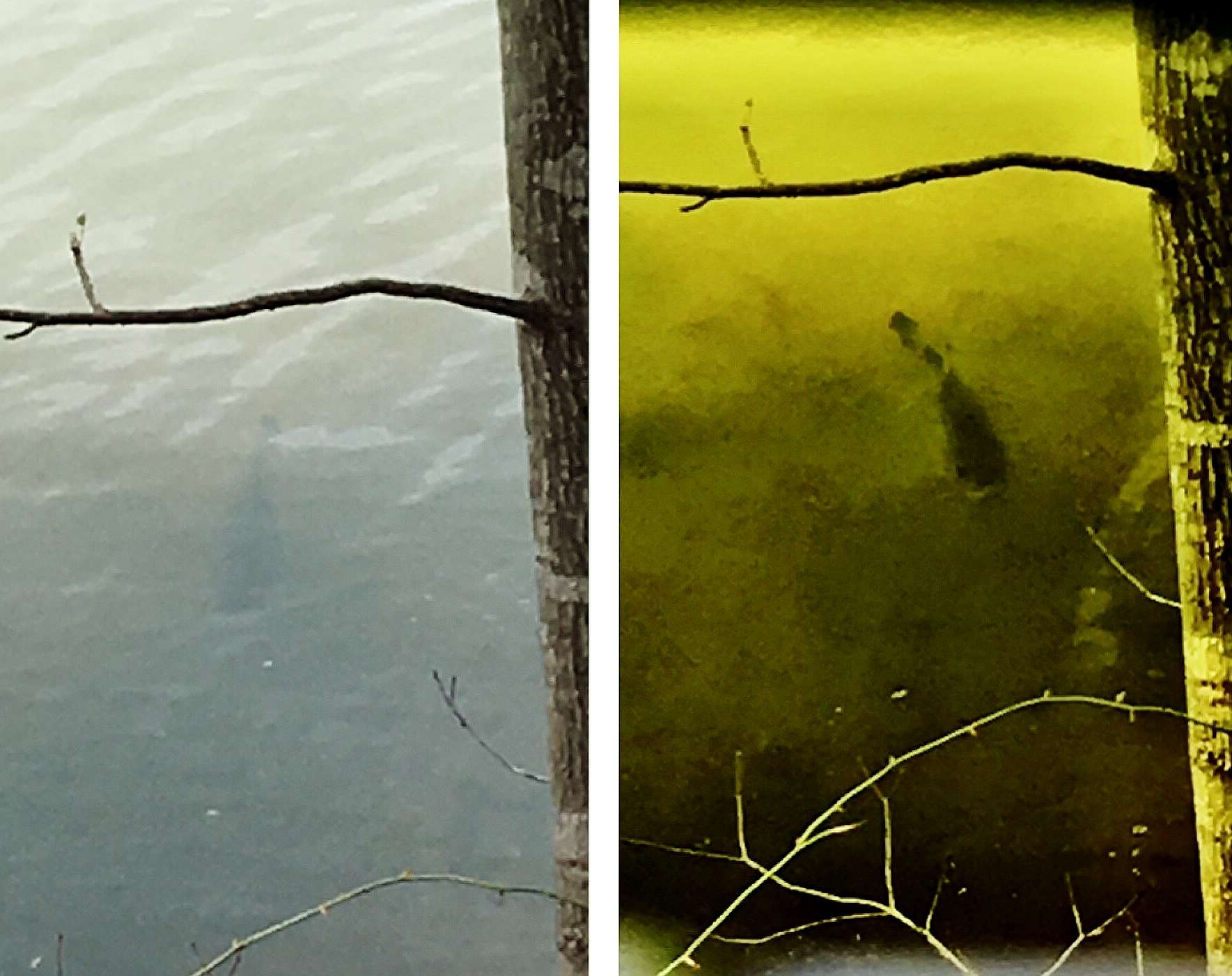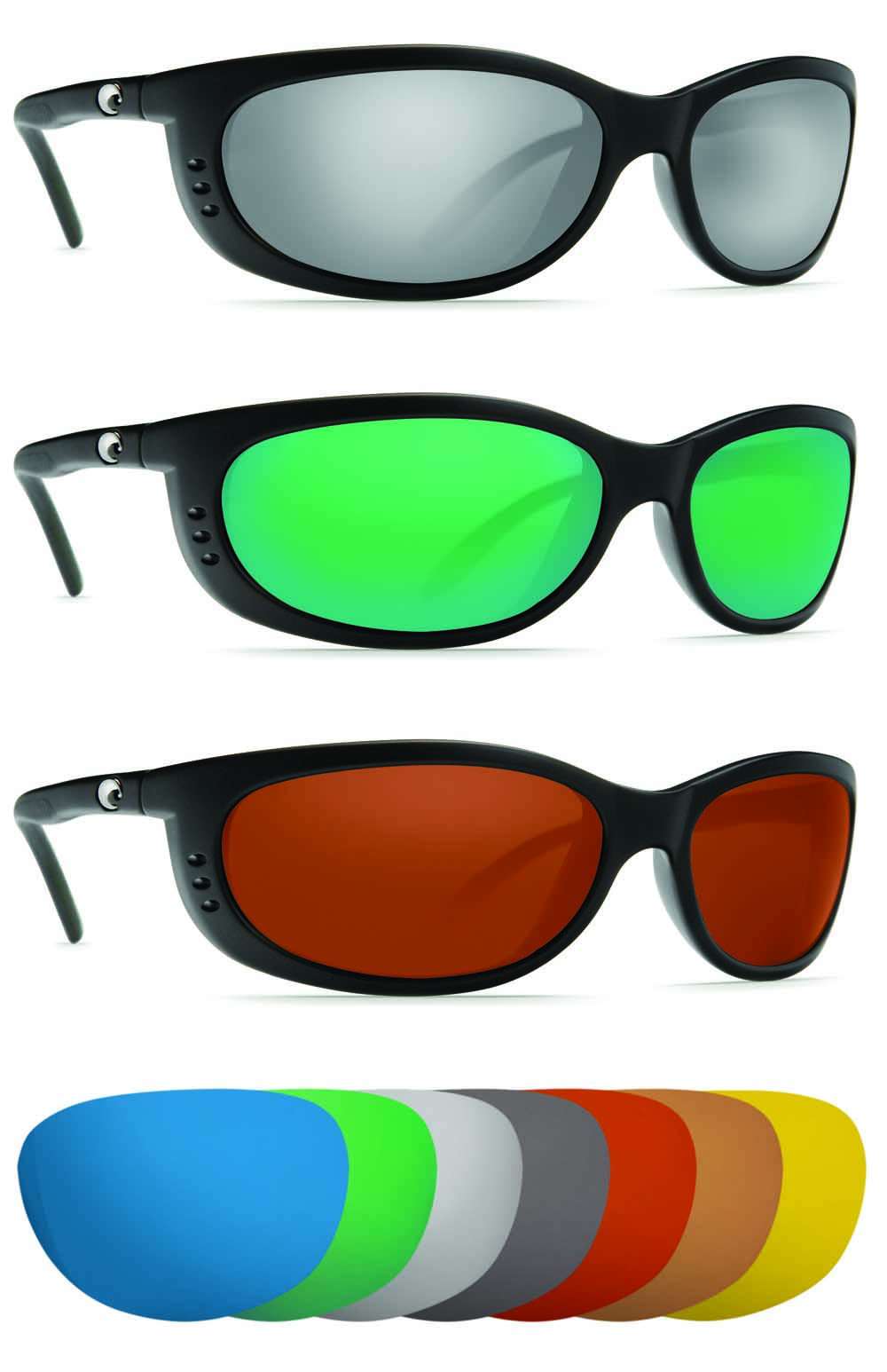
As spring advances northward across the country, bass are moving shallow. And in many cases, they’re visible … if you have an eye for them.
The truth is, most anglers struggle to see fish. Even those who can often miss out — believing if they can see the fish, the fish can see them, and therefore they’re uncatchable.
Nothing could be further from the truth.
It is possible to catch the fish you see — even for someone like me with poor vision. With corrective polarized lenses, the task is much easier. It just takes the right optician.
Blind Leading the Blind
I have astigmatism, which means I’m unable to see well at any distance. But when I wear corrective lenses, I see fish better than most. Somehow, I pick up color and movement well, which tips me off to their location.
But that wouldn’t be possible without the help of quality prescription sunglasses.
The key was finding the right frame and lens combination, then working with a talented optician who understood sight fishing.
For me, that guy was Harry Allen of Optics Eyewear in North Carolina.
Harry is a former tournament competitor. He fished B.A.S.S. Invitationals throughout the late 1980s and early 90s. Through this, he recognized the need for custom optics. That’s when he dedicated himself to finding the right combination of frame and lens colors to block out extraneous light and improve vision under a wide range of light levels.
In fact, Harry’s company was one of the original custom optical centers to handle prescriptions for Costa Del Mar, before they had their own in-house lab.
Now owned and operated by Chuck Swaim, Optics Eyewear continues to serve the needs of Costa, among others, particularly for their more complicated prescriptions. They routinely build bi-focal and tri-focal lenses specialized for fishermen, and if requested, they can create a “progressive” lens so that the transitions aren’t noticeable.
Besides providing these services, Harry’s team was also integral in the development of Costa’s specialty low-light lenses. In fact, former Bassmaster Elite Series pro Marty Stone and I served as field testers for Harry, frequently trying various frame and lens combinations.
Things to Look For
So, what’s the best all-around lens color? That depends. Everyone’s eyes and preferences are different.
Generally speaking, lighter lenses are intended for low light levels; darker lenses for brighter levels. Exceptions can occur when trying to contrast fish against cover or various bottom compositions, like sand, gravel or mud, or in various water pigmentations (even ultra-clear water has some coloration to it).
That said, if I had to choose just one, it would be some variation of amber-brown. They work well under a wide range of light levels, and they do a great job of contrasting fish from their surroundings.

It’s important to note that not everyone’s eyes will respond to certain lens colors in the same way. For that reason, there is a broad range of colors and shades to choose from. Figuring out which best suits you is as important as the frames you choose.
Then there’s the choice of acrylic versus glass. Acrylic lenses are lighter and virtually shatterproof, but some anglers still prefer glass. The belief is that glass is purer and more durable. While that could be disputed, I choose to go with acrylic lenses because I have a heavy script. With acrylic lenses, my glasses are lighter and much more comfortable. Acrylic also has the ability to protect my eyes from misguided lures traveling at warp speed.
Seeing is Believing
Regardless of lens type, if you’re in the market for a pair of custom sunglasses, here’s how to go about it.
First, get your eyes examined by a registered optometrist (preferably one that knows fishing). While having your eyes tested, be sure to ask for your “pupil distance” — the centerline measurement from one pupil to the other. This is critical when trying to fit a pair of polarized sunglasses. Think of it like looking through a pipe; if your alignment is off, you can’t see as much. So be sure the measurement is precise.
Next, I suggest you visit a sunglass dealer who offers a broad range of styles. There, you can try various frames to find your best fit. You can also test various lens colors to see which are best for your eyes (keeping in mind that no one color will be perfect for all light levels encountered on the water).
After that, it’s simply a matter of submitting the prescription along with your lens and frame preferences to a qualified optician, and you’ll be seeing fish in no time.
Although custom optics can cost considerably more than standard sunglasses, the bottom line is they’re worth it. Just as a high-end rod or reel can enhance the fishing experience, so can a pair of quality, polarized sunglasses.
You’ll see and catch more fish. I guarantee it!


